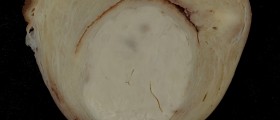
A placenta normally takes 10 minutes to an hour to deliver, if no active management is used. The process will be speeded up if the woman moves around a bit, remains in an upright position, and nurses her baby (something that makes the uterus contract immediately postpartum). Sometimes, the delivery of a placenta can take longer without there being an actual medical problem. A retained placenta needs medical intervention but the exact solution to the "stuck placenta" depends on the cause of it being retained. The three most frequent causes of a retained placenta after childbirth are:
A uterus that will not contract following birth, or not strongly enough to expel the placenta. The placenta may successfully separate from the uterine wall, but fail to be expelled from the uterus because the cervix has already closed. Placenta accreta, which is a dangerous complication in which the placenta is embedded deeply in the uterine wall. There are several degrees of placenta accreta, and the treatment strategy will depend on the degree to which the placenta is embedded in the uterine wall. In extreme cases, hysterectomy is carried out.If your placenta won't budge after you give birth, a shot of Pitocin (the same drug used for labor induction) is usually the first treatment used. Usually, this will be more than enough to get the placenta to come out. If Pitocin does not help, a placenta may need to be removed manually with epidural anesthesia. In extreme cases, a hysterectomy will be required.













Your thoughts on this
Loading...